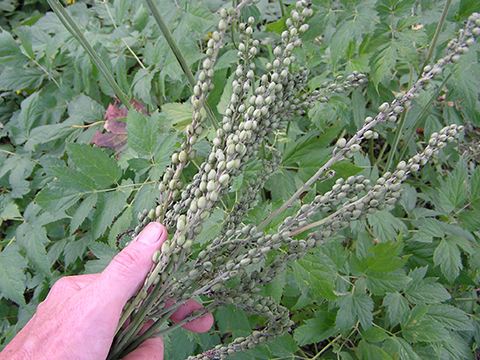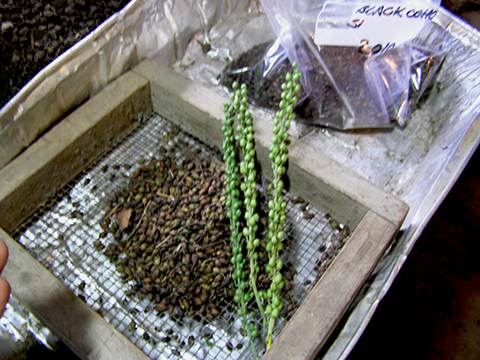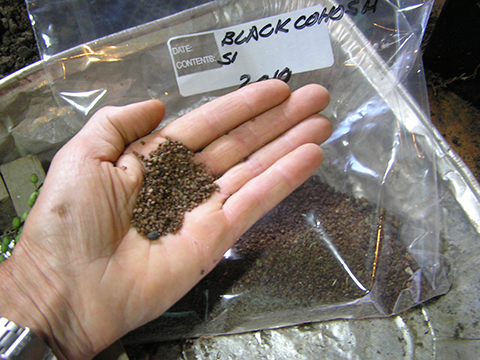 |
| Home | Ordering By Mail | Purchase Manual: Using Native Plants in Urban Landscapes |
|
|||||
Species Name: Actaea racemosa, Cimicifuga racemosa
Common Name: Black cohosh
Zone: 3 to 9
Distribution: Massachusetts and New York south to Virginia and South Carolina
Seed collection: Flowers are produce on tall multi-branched flower spikes. Small capsules develop from the flowers with several tiny dark brown sand size seeds contained in each capsule. Wait until the first capsules begin to dry and split open. Then break off each seed spike and place in a paper bag for drying. When capsules dry they will spilt and open up spilling their seeds. Shake the bag to remove all of the seed or strip the numerous tiny capsules by hand from the stalk.
Seed handling: Separate the seed from the capsules by using a screen of the right sized mesh so the seed will fall through and the capsules remain behind. Do not let seed dry out after cleaning. Immediately place seed in moist stratification for best germination. Sow seeds in flats or stratify the seed for storage or plant out doors in suitable habitat.
Germination requirements: Some black cohosh seed will germinate the first season after harvest. Germination percentages are variable, some years there will be high germination rates and low in other years. Some seed may take one or two additional years. Seed requires a chilling period of one to two months; seed that is sown outdoors in the fall will have their chilling requirement met. Seed that is being stratified should be subjected to outdoor fluctuating temperatures or placed in the refrigerator for one to two months just before planting. Seedlings germinate in early spring through mid summer. They will develop into small plants by fall. Plant may flower the second growing season.
Sow seed on the surface of the soil to ½” deep. Any average to rich soil will do. Under natural conditions, move the leaf litter aside, sprinkle seeds on the soil, then replace the leaf litter.
Ecology: Black cohosh is an easy woodland species to grow and propagate from seed. The seed is abundant; easy to collect and seed readily germinates under natural conditions. Cohosh grows in part sun to full shade in dry to average to moist woodland soils. It is adaptable to a range of soil and horticultural conditions. Black cohosh is a large plant with flower spikes reaching 6 to 7 ft in height.
Black cohosh is very resistant to deer browsing and should be encouraged where deer populations are high. Baneberry is an attractive ornamental and makes a stunning display when in flower.

Black cohosh seed stalks

Seed and pods ready for screening
to separate seed from chaff

Cleaned seed ready for stratification
this page posted January 6th, 2014